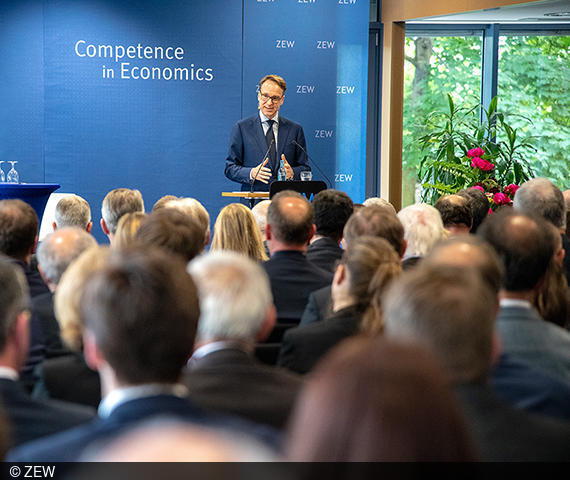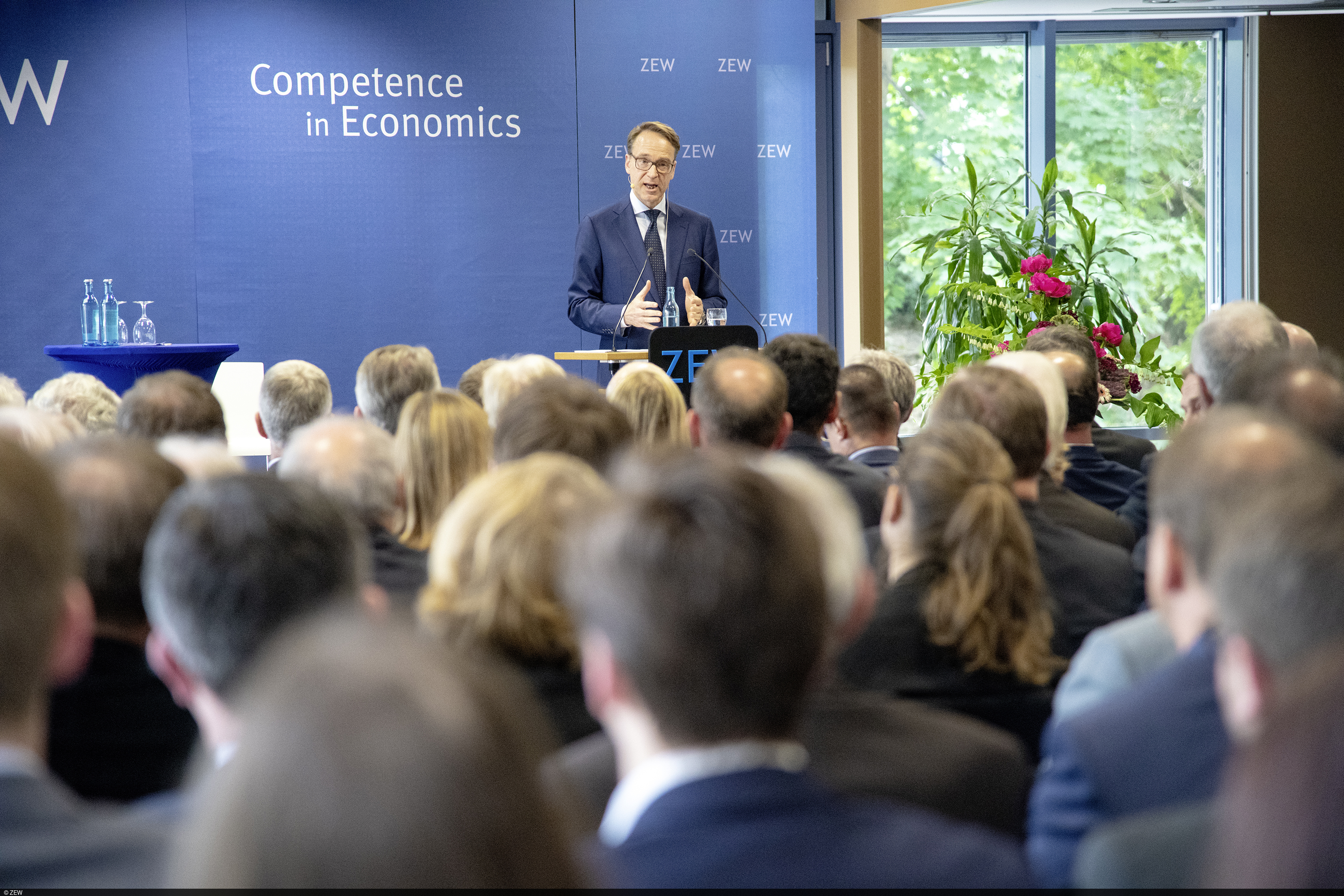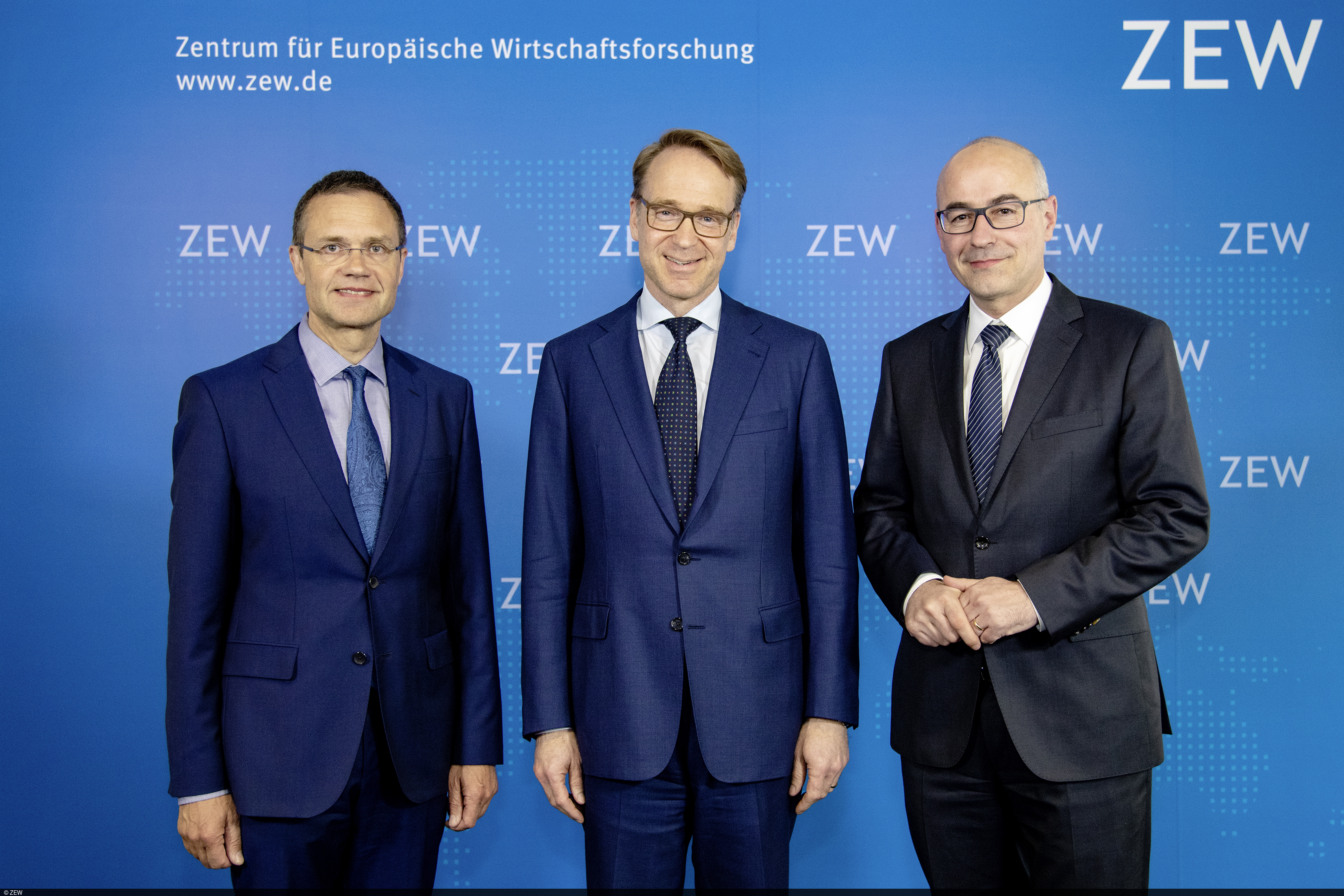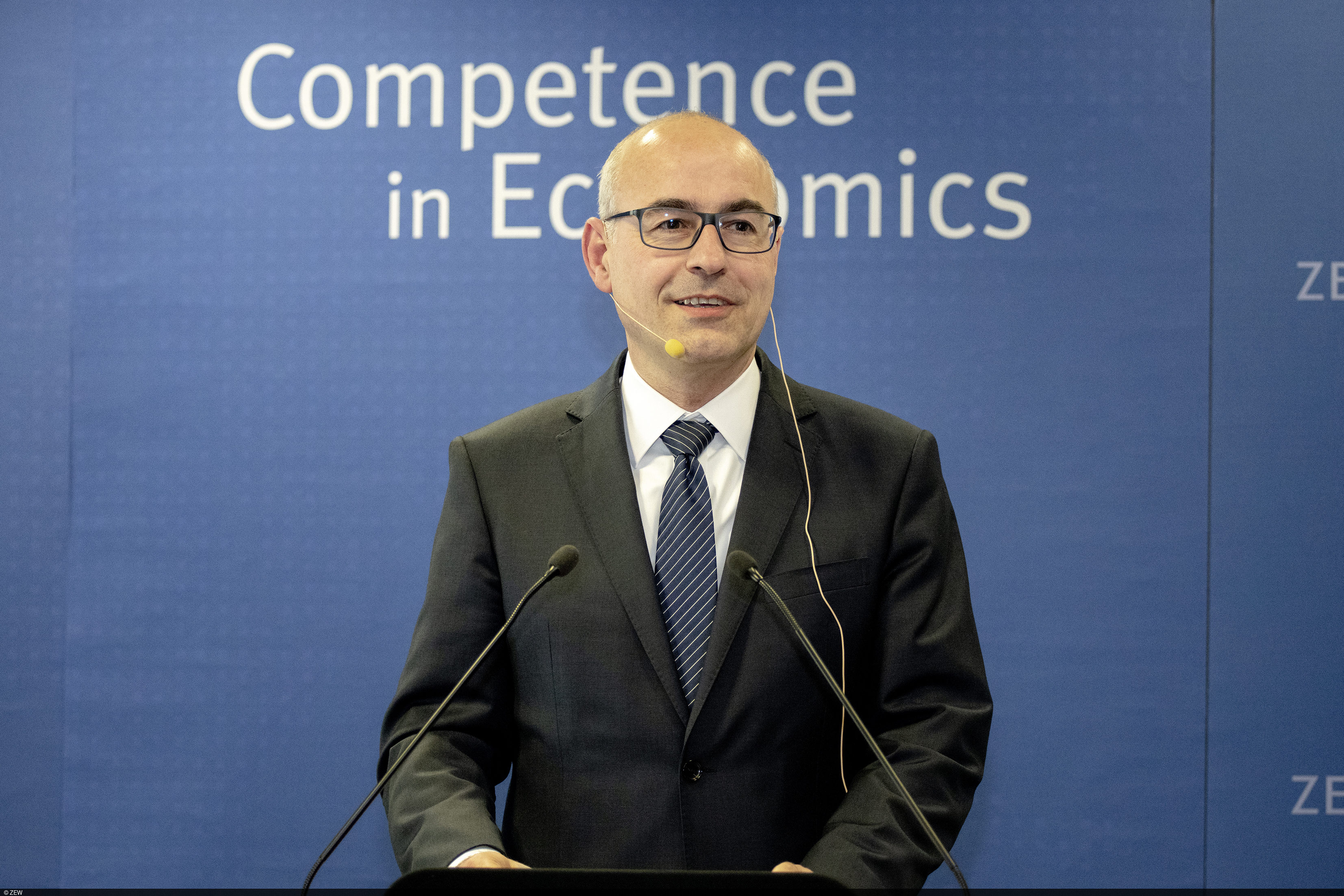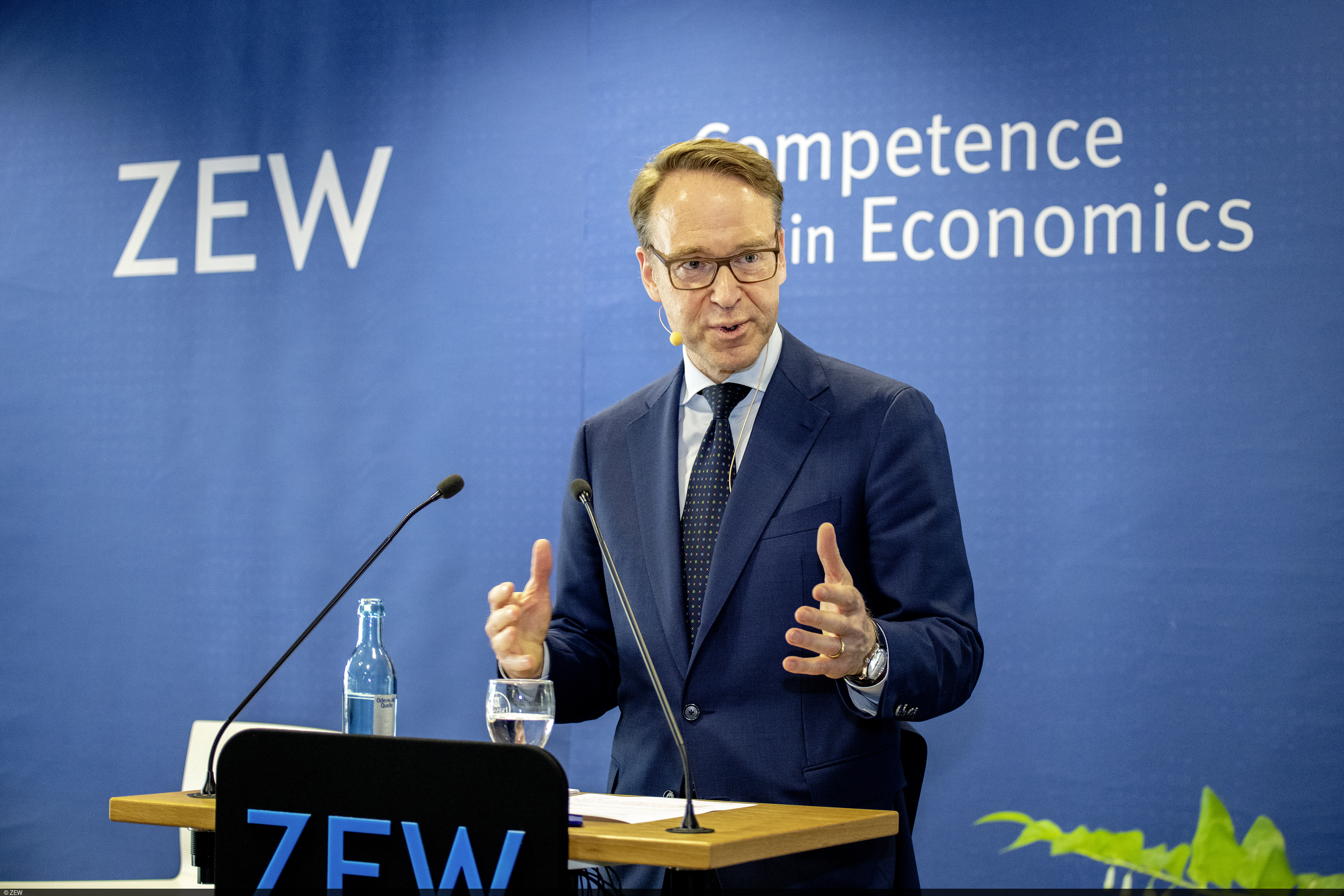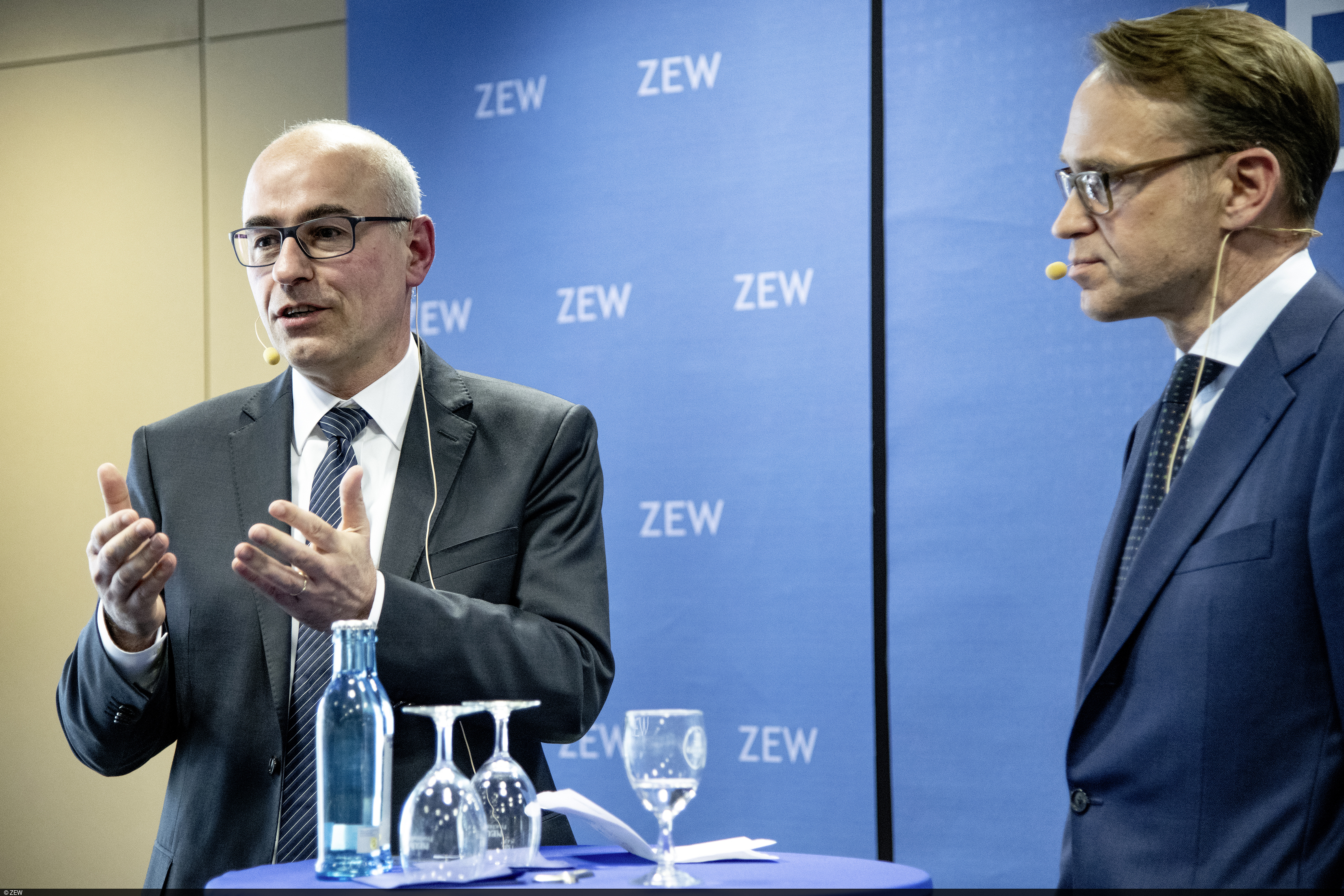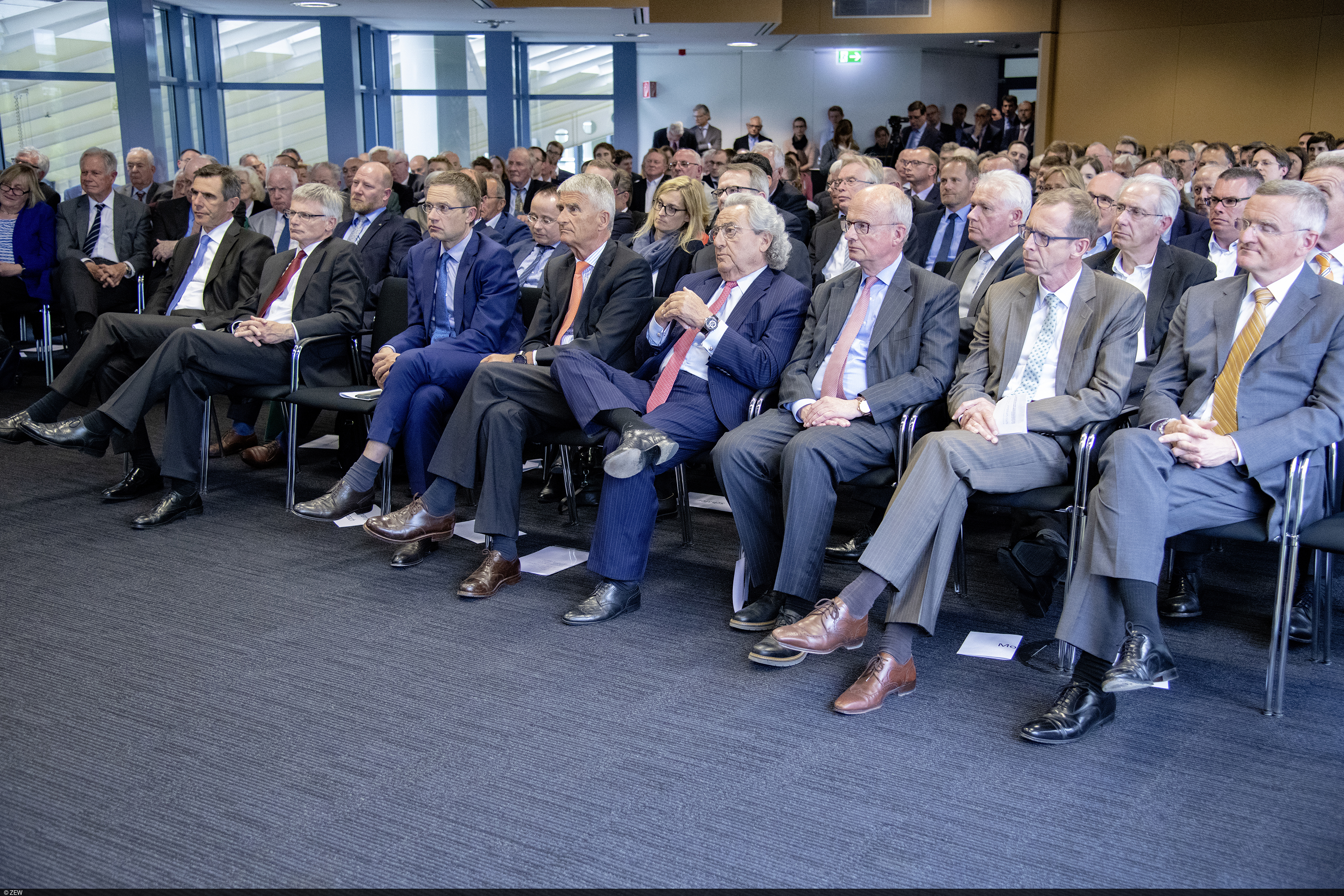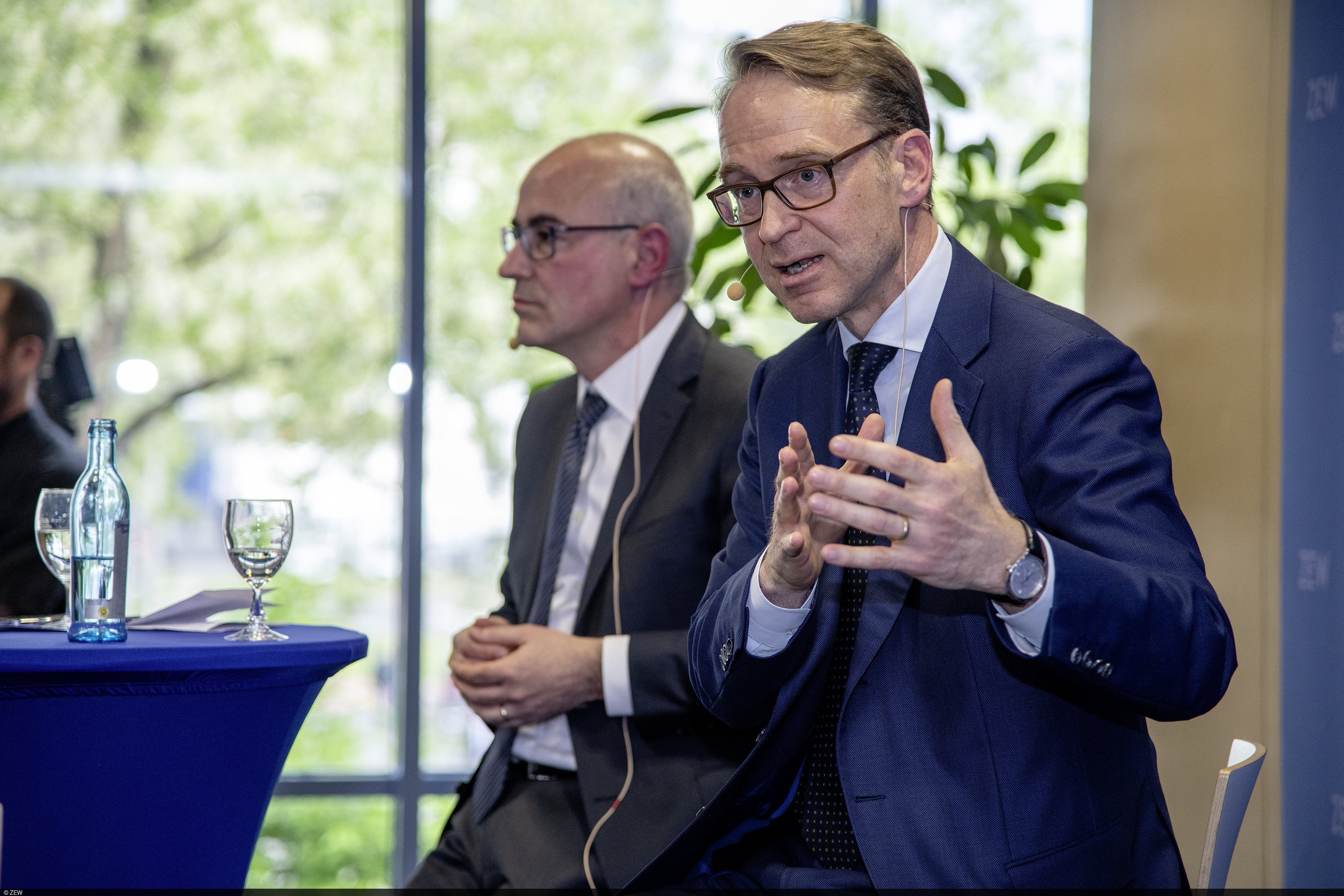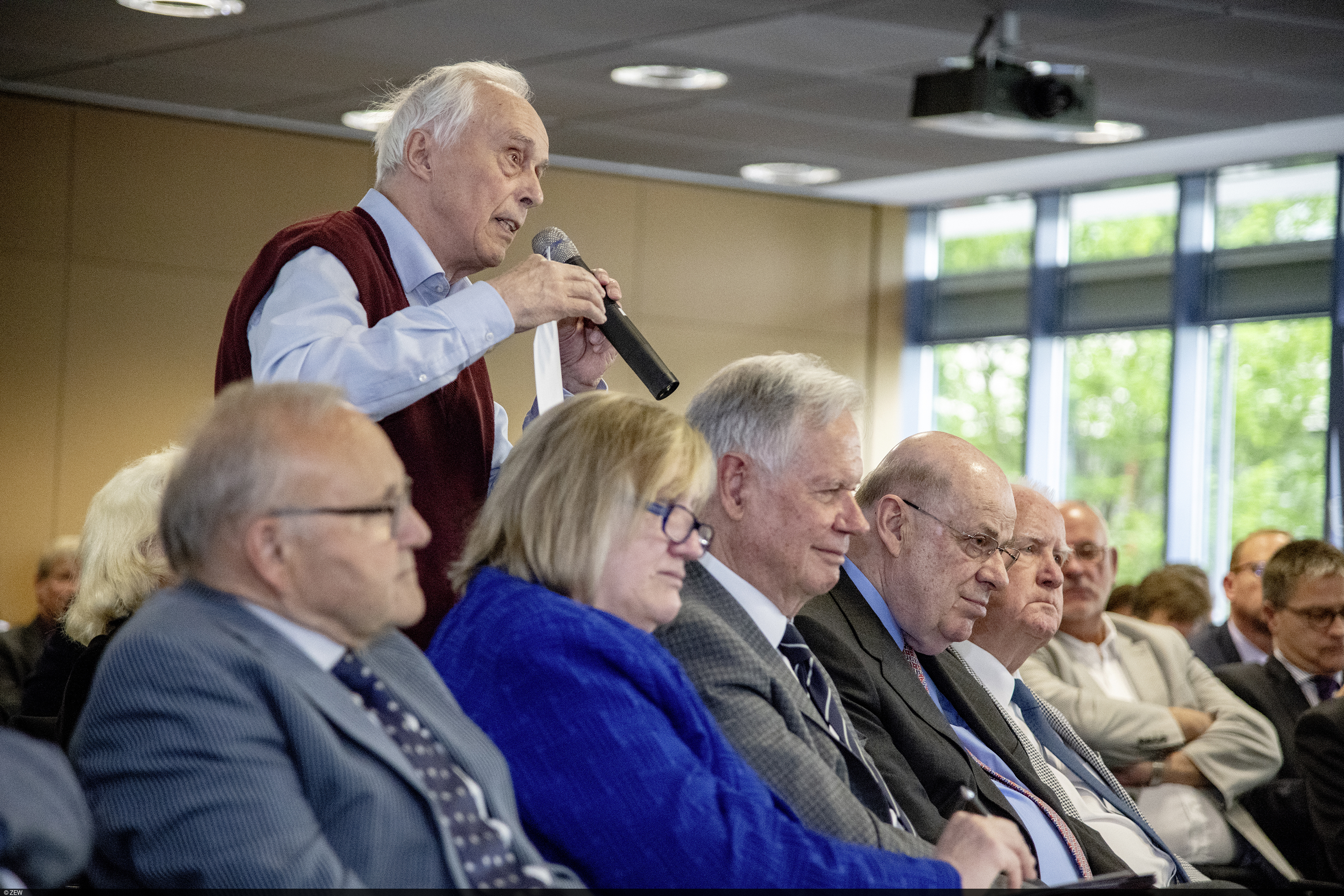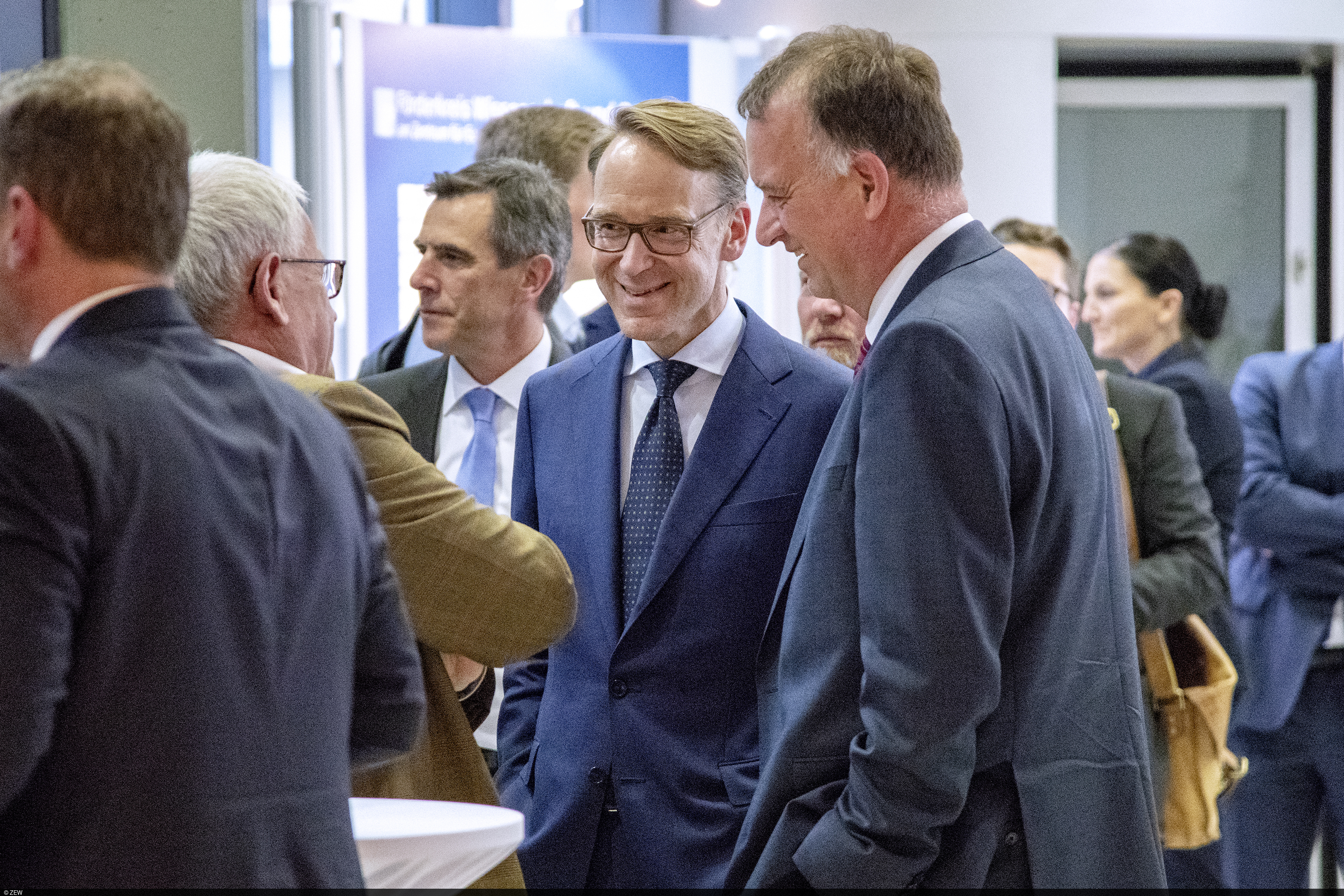Successful Monetary Policy Needs Effective Communication from Central Banks
Public EventsBundesbank boss Dr. Jens Weidmann recently gave a lecture at ZEW on “Communication as a Monetary Policy Tool for Central Banks”. ZEW President Professor Achim Wambach, PhD, had the pleasure of welcoming over 200 guests to the event, which was part of the lecture series “First-Hand Information on Economic Policy”.
Though Weidmann conceded at the very beginning of his talk that how central banks communicate with the public is not necessarily the most thrilling subject in the world, he proceeded to enthral the audience over the following thirty minutes with his fascinating, concise and engagingly delivered speech.
Speeches such as this, the president of the German Bundesbank noted in the opening to his speech, have become an important communication tool for central banks, though this is in no way the only means of communication at their disposal. Others include the regular publication of reports, interviews and press conferences. When reading the statement from the president of the ECB following the ECB Governing Council’s regular meetings on monetary policy, for instance, so-called “ECB watchers” look for the slightest changes in wording as a suggestion that the bank may be altering its policy. And it is not only what is said, but also what goes unsaid, that is analysed in great detail as a potential message from the banks.
Mere decades ago, central banks were far less transparent in terms of what they chose to communicate with the public, creating an aura of mystery around their activities, according to Weidmann. For example, a book on the US Federal Reserve (Fed) published 30 years ago bore the title: “The Secrets of the Temple”. The Fed is a particularly good example for displaying the changes that have occurred since, gradually improving how they inform the public on monetary policy over the years, communicating their goals in relation to interest rates more clearly, publishing voting results and making statements on how interest rates are likely to develop. Since 2011, the Fed also holds regular quarterly press conferences following FOMC meetings.
Greater transparency through more intensive communication
As Weidmann made clear, the goal behind central banks’ communicating more intensively with the public is greater transparency. By explaining their decisions in a clear and comprehensible manner, banks can foster trust among the public that they are fulfilling their mission of keeping prices stable. According to Weidmann, this trust is the most valuable capital for any central bank. Effective communication can also serve as a monetary policy tool. Whenever people participate in the economy, they are looking ahead to the future, creating expectations that can be shaped by central banks through effective communication.
As Weidmann explained, the impact of monetary policy has less to do with short-term money market interest rates and much more to do with expectations regarding the future development of base rates, particularly in the long term. How central banks communicate with the public thus helps to steer expectations and, the more effectively these expectations are steered, the better able central banks are to stabilise demand at the macro-level and, by extension, price development.
A key role in shaping monetary policy expectations, according to Weidmann, is played by the announcement of banks’ inflation targets. For instance, even before the introduction of the euro, the ECB Governing Council published a quantitative definition of price stability which they later refined. The goal behind this was to banish any doubts over the stability of the Eurosystem from the outset.
The ECB’s communication tools
In terms of how the ECB communicates with the public, Weidmann points to its regular press conferences as a communication tool that allows the bank to explain its monetary policy decisions in detail and in near real time. Since 2015, the ECB Governing Council has been publishing its regular “accounts”, detailed written summaries of its monetary policy meetings. The thinking behind this measure is to prepare the public for upcoming monetary policy decisions using effective communication so that, when the decision does come, the markets are barely taken off guard at all.
According to the president of the Bundesbank, effective communication in central banking is also characterised by the fact that it clarifies how the direction of current monetary policy is dependent on the respective economic environment and how the central bank will react to any deviations from its declared targets. In this way, market participants can adjust their expectations regarding interest rates and inflation, and thus their behaviour, to new developments, such as an unexpected increase in oil prices. As a result, the central banks themselves then do not have to react so strongly to the changed economic environment.
Crucial, in the mind of the Bundesbank president, is communicating precise information. That means that central banks, particularly in times of crisis, should not shy away from providing necessary guidance out of fear of negative reactions from the markets. As Weidmann sees it, issues of communication represented a particular challenge for monetary policy when it came to reaching the effective interest rate floor in the Eurozone.
“Forward guidance” of economic expectations
Following a strategy known as “forward guidance” the ECB Governing Council therefore began to give some indication of how interest rates would be developing as far back as July 2013, before the effective interest rate floor was reached. However, we should not take a too narrow view of forward guidance, since it involves more than just hinting at the future development of interest rates. Forward guidance essentially encompasses hints at all kinds of future monetary policy decisions. However, as Weidmann explained, the forward guidance provided by the ECB Governing Council is not set in stone. If, for example, the inflation dynamics had gathered pace quicker than expected, the Eurosystem could have strayed, albeit with some justification, from the course originally indicated by the ECB.
In order to relax their monetary policy, despite the restrictions imposed by the interest rate floor, the ECB ultimately resorted to unconventional methods. In the Eurosystem, the decision was made to embark on an expansive asset purchase programme. According to the latest prognoses released by the ECB, the inflation rate in the Eurozone will increase by around 1.7 per cent by 2020, that is, by a percentage that more or less fits the ECB definition of price stability as “under, but close to two per cent in the medium term”. According to Weidmann, it is therefore not surprising that the financial markets have for some time been anticipating the end of net asset purchases by the end of this year. The ECB has announced that purchases will continue until at least September.
The end of the net purchases would represent the beginning of a return to normal monetary policy, a process which will take some time. This is precisely why, in Weidmann’s mind, it is important not to postpone initiating this process without good reason. This normalisation would also create some room to manoeuvre for monetary policy to react to potential economic shocks in the future. This flexibility is needed, according to Weidmann, since the current economic upswing cannot last forever.
Preparing the public for a return to normal in the Eurozone
As the ECB begins to turn away from its current, unusual monetary policy in the Eurozone, it might be helpful to a certain degree to look at the actions of the Fed when it ended its low interest rate policy, though there are certain differences. According to Weidmann, at the start of this normalisation process, economic development in the Eurozone will likely be more advanced than it was at this point in the process in the US. The first interest rate hike could therefore come sooner after the end of the net asset purchases than it did in the US, where more than a year passed between the end of the asset purchase programme and the first interest rate increase. Market participants anticipate the first interest rate hike to come sometime around mid-2019, which Weidmann does not find entirely unrealistic. At the same, the ECB’s choice of words “for an extended period of time, and well past the horizon of our net asset purchases” is extremely vague, raising the question of whether the ECB will give a more precise date and when.
According to Weidmann, providing some sort of forward guidance would undoubtedly prove invaluable in the process of phasing out the ECB’s asset purchase programme without tying the hands of the ECB Governing Council with respect to future decisions. In the coming weeks and months, the ECB Governing Council will have to get to grips with how to prepare the public for this return to normal monetary policy through statements and other forms of communication. In this kind of situation, being well prepared is extremely important.
The talk was followed by a discussion between Achim Wambach and Jens Weidmann in which the two men touched on a number of issues, such as whether the ECB is committing itself too much to certain decisions through the forward guidance principle and whether it would be better if the 19 central bank heads on the ECB Governing Council all addressed the public with a single voice. For the president of the Bundesbank, forward guidance does not commit the banks too strongly to future decisions, highlighting instead the demystifying effect the principle can have. Forward guidance clearly signals to the public and to market participants how the ECB will react if certain economic conditions change. Weidmann also saw the variety of different voices on the ECB Governing Council as a positive aspect. If there is dissent over basic issues and contentious discussions are resolved via majority vote, financial market participants can take this information from the ECB’s statements and accounts and use them to shape their expectations. The resulting picture is thus more realistic than if the ECB were to try to silence any differences of opinion on the council.
The audience made full use of the ensuing Q&A session. Questions focused, among other things, on how inflation targets are discussed in the ECB Governing Council and how they are then communicated to the public, monetary policy challenges resulting from the in some cases vast economic differences between the Eurozone countries, as well as the effects of the ECB’s expansive monetary policy on German and to what extent the ECB has further tools at its disposal to ward off future economic downturns. Other audience members asked whether Mario Draghi’s “Whatever it takes” speech was approved by the ECB Governing Council in advance and whether the future would be cashless. The event concluded with a reception where guests had the opportunity to discuss these issues further.
